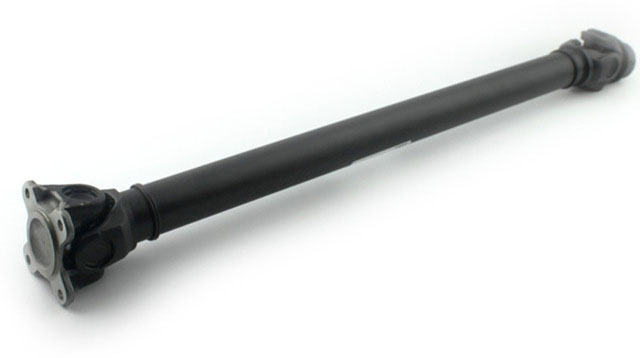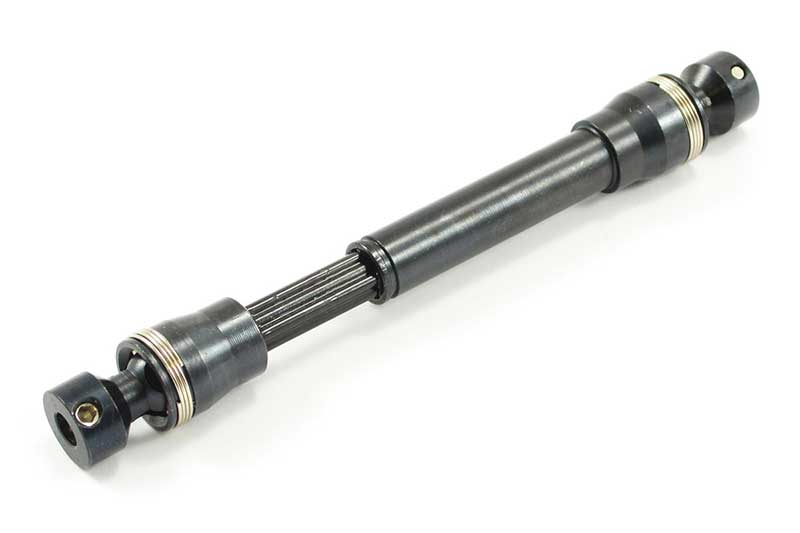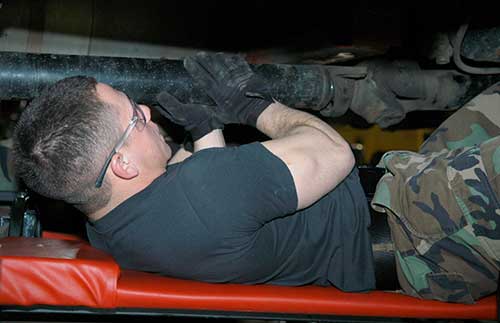Having a car is more than owning a good that takes us from point A to point B. Often we can get in the situation of being confronted with certain faults in the most unexpected moments.
Even though the problem can be a complex and difficult one that requires the intervention of a mechanic, it doesn’t hurt to know more about the technical part behind the body for any eventuality.
Today we will focus on the symptoms that can occur if the driveshaft begins to fail.
Contents
What is a driveshaft?

You may have heard of the concept of longitudinal transmission. Briefly and to the subject, the driveshaft is that element that extends beneath the entire surface of the car, which, transmits the rotation from the transmission shaft to the rear axle.
For this reason, in a car with front-wheel-drive, you will almost never meet this element. The drive shaft can only be found on 4X4, AWD (all-wheel-drive) and FWD (four-wheel-drive) cars or those with rear-wheel-drive.
Also, the driveshaft can make the connection between the clutch and the gearbox, if the transmission located on the inside of the car. Generally speaking, the driveshaft has the purpose of transmitting the driving force, without producing modifications, to various elements of the car.
But like any other component of the car, it can also have faults.
What are the symptoms of a failing driveshaft?
A noise similar to a squeak when the car starts to move, either in front or reverse
Most of the components that make up the driveshaft are still oiled from the factory, but this lubrication may not be enough to support the movements of the car during driving, after a certain period
Since each element of which the shaft is made, it supports a certain movement, friction, speed change, it is very possible that this oil will dry quite easily. Especially since the supported movement is in the same location.
Thus, without having any form of lubrication, the friction remains between metal to metal, producing a noise similar to a squeak. You may be able to capture this noise only at startup or before the car has a higher speed and the sound is alerted by other related noises.
But the noise will have to be considered a sign that you should consult a mechanic for your safety and your car’s own good and also in the hope that you can extend the life of the driveshaft.
A clanking sound when switching gear to reverse
This specific type of sound indicates that the bearings that make up the shaft have enough room for movement, to allow the necessary rotation of the transmission shaft, but they reach a dead end when you try to change the gear in reverse.
This may mean that the next stage of wear has been reached, as mentioned in the previous point. You must go to a mechanic to lubricate the driveshaft, but also to prevent further damage.

A certain vibration of the car
Any kind of vibration or movement that is out of the ordinary when you are driving a long distance and at a high speed is a bad sign.
In this case, it could mean that the bearings have worn out so much that they allow a wider than usual movement of the transmission shaft, coming out of its axis.
Even though the sensation of an unbalanced wheel may be similar, it will be much more frequent, as the rotations of the drive shaft are 3-4 times faster than those of the wheels.
This symptom can be an alarm signal because it indicates not only that you have driveshaft problems, but also that these faults affect other surrounding elements, such as transmission. In this case, you must necessarily call a mechanic to capture exactly the driveshaft element that suffered faults and change it, before further damaging the condition of the car.
The transmission fluid is leaking
The moment you notice that behind the transmission fluid begins to leak is another sign that you have problems with the driveshaft.
It means that the above-mentioned vibration has come to affect the transmission shaft and to cause damage to the output shaft, thus resulting in leakage of the transmission fluid.
If you notice this type of symptom, you must necessarily go to a mechanic to capture the causes of the leak and take a look at the transmission system.
Noise from under the car
When there is a large movement between the driveshaft parts, it will make some loud noises, as if you were hitting two metal hammers head-to-head or even resembling the sound of the bell. In this case, the driveshaft must be changed urgently.
Displacement at the transmission shaft
It is possible that you have heard or even seen this type of failure, in which case you have no choice but to pull over and wait for a tow truck. This means that it has reached the final and culminating point of wear and tear, where the transmission shaft has completely and effectively been damaged. In this case, the repairs will be extremely expensive, because not only the driveshaft was damaged, but also this car part will need a complete replacement.
Thus, to avoid getting into such extreme situations, it is better to use periodic technical checks and go to the mechanic for the first symptoms you are experiencing. It is better to intervene early, with little expense than to wait until complete damage to the driveshaft shaft and transmission shaft.
Checking the driveshaft regularly at a specialized workshop is best at least once a year in the case of cars, and at least 6 months in the case of buses or heavy-duty vehicles.
How much does it cost to replace the driveshaft?

The cost of replacing a driveshaft differs depending on the operation needed because you may only need to change only a few parts. Keep in mind that the type of car plays a major role in both the price of parts and labor.
If you just replace your front-wheel-drive car, then the cost can be from $ 500 to $ 1000. You can expect the cost of the parts to be from $ 400 to $ 800, and the labor costs are only $ 200 to $ 250.
If you have a rear-wheel-drive or four-wheel-drive car, then expect the cost to be in the $ 700 to $ 2,400 range.
